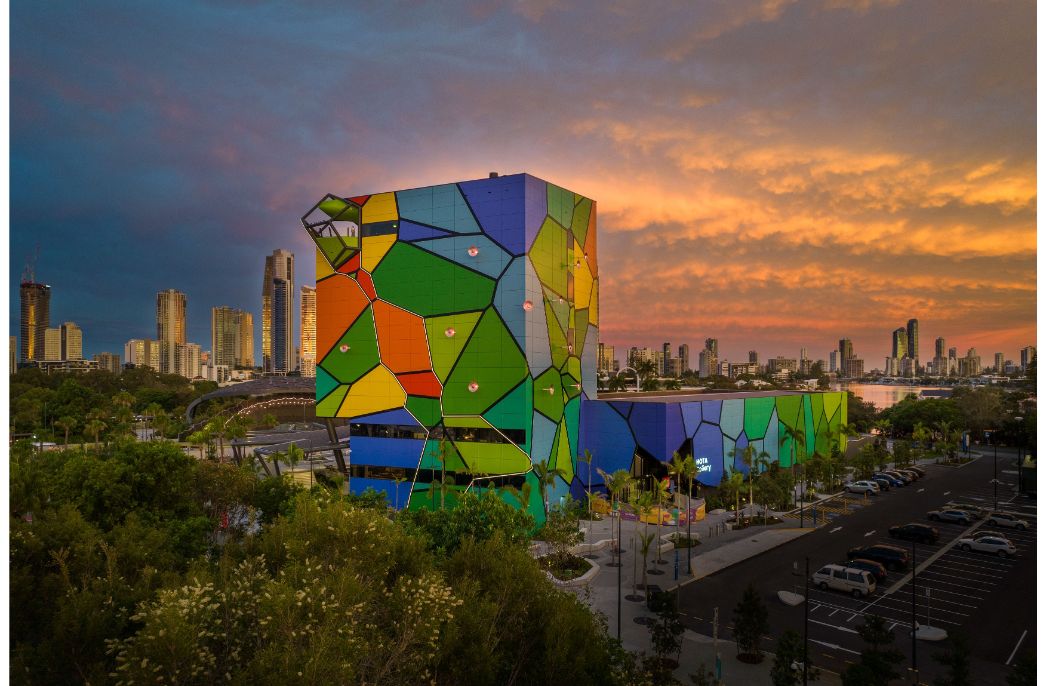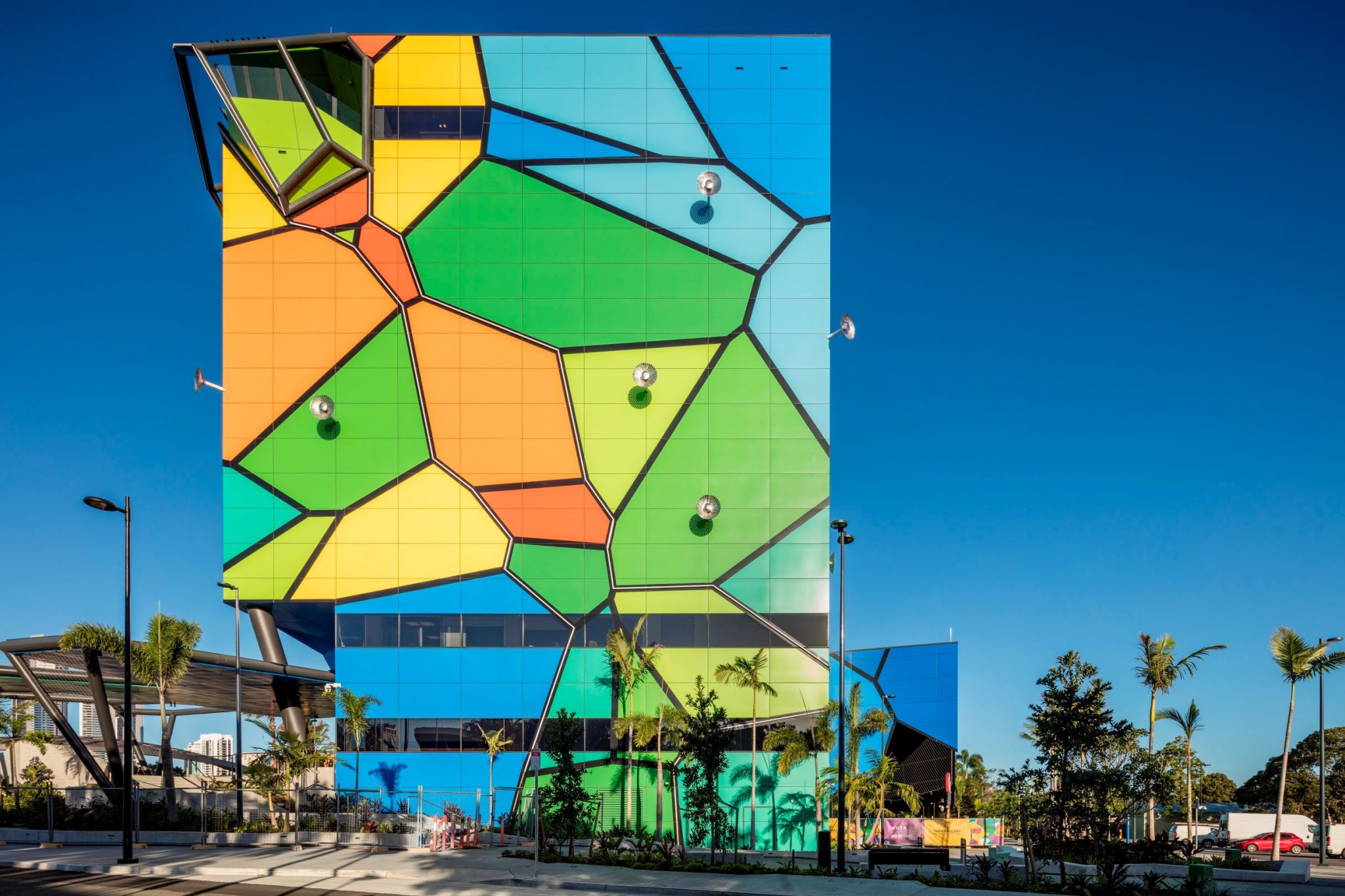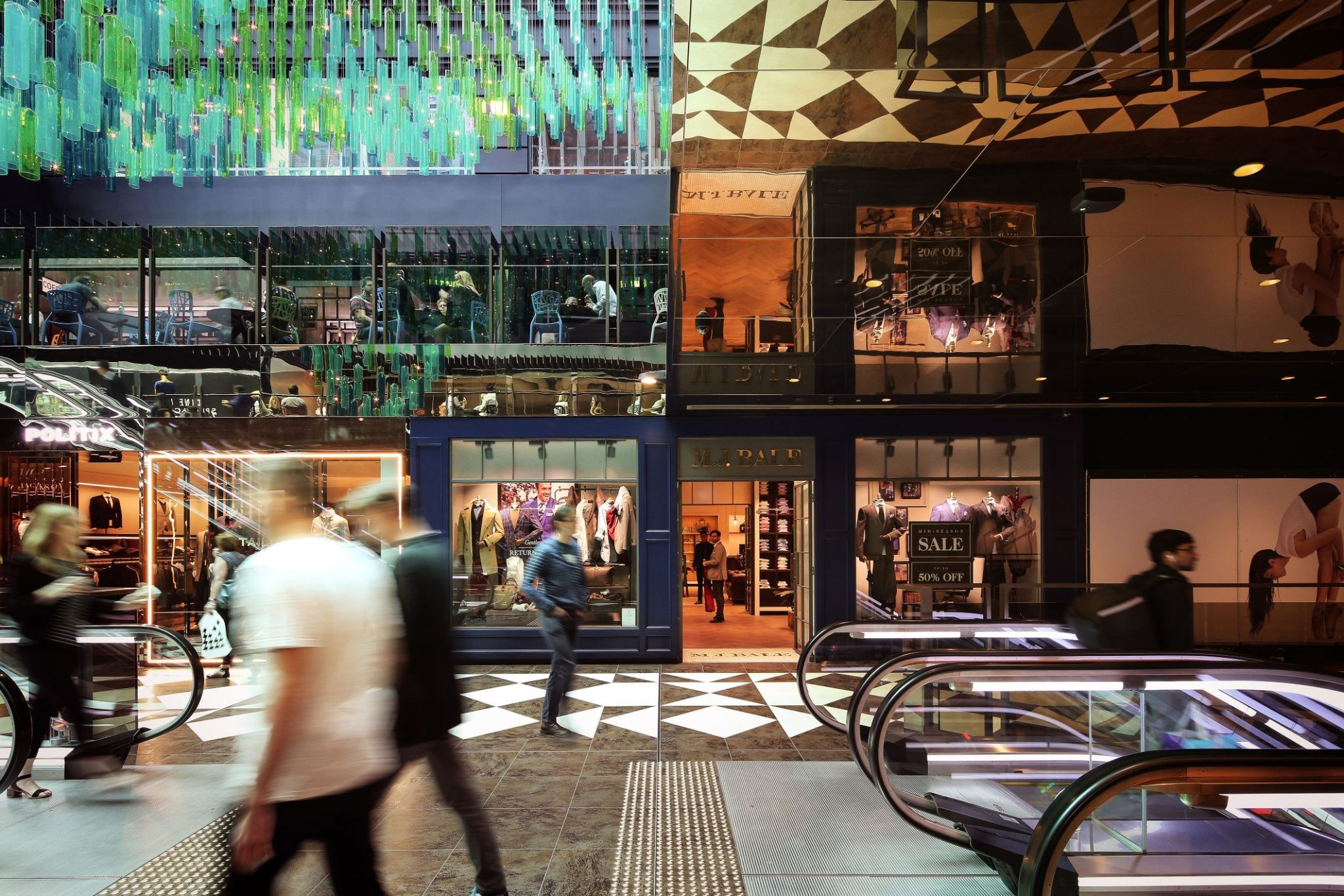
ARM Architecture unveils reimagined Geelong Arts Centre
ARM Architecture unveils reimagined Geelong Arts Centre
Share
Culturally layered designs have been revealed for Geelong Arts Centre’s $140 million Little Malop Street Redevelopment, positioning the building as a visionary hallmark in the city’s cultural precinct.
Designed by ARM Architecture, the reimagined Arts Centre draws on electric and bold design elements to offer locals and tourists a cultural experience reflective of local histories.

ARM founding director Ian McDougall says each element of the external design is enriched with a “story of its own, whether that be visual references relating back to performance, the historical context of the site or to Wadawurrung culture and traditions.”
The Wathaurong nation, also called the Wathaurung, Wadawurrung and Wadda Wurrung, are the traditional owners of the area covering the Pyrenees, Ballarat, Golden Plains, Greater Geelong, Moorabool, Wyndham, Ararat Rural, Corangamite, Melton, Surf Coast and Queenscliffe.
Honouring the precincts’ existing campus-like structure, the building has been envisioned as a series of destinations, each with its own design narrative where new and existing facilities connect via paths from Ryrie Street to Little Malop Street.
The building features an external concrete drape that runs across the front of the structure, complementing a circus “Calliope-shaped” entrance that references early traveling performance in Victoria.

ARM worked closely with Wadawurring artist Kait James and local First Nations artists Tarryn Love, Gerard Black and Mick Ryan to showcase First Nations stories throughout the campus.
“We engaged the Wadawurrung Traditional Owners Aboriginal Corporations as co-designers in this project, also working with First Nations people in Geelong to identify key opportunities very early on,” says McDougall.
“The design has its own identity which feeds back into its location. It’s telling the story of Djilang (Geelong), and of the profound traditions of performance on the Wadawurrung site for thousands of years.
“This is what speaks to people all over the world through its design. It’s a celebration of everything Geelong is.”
With this in mind, each of the building’s four levels evokes a different Wadawurrung creation narrative with Earth and Ochre Country expressed at ground level, ascending to Moonah Forest Country, Sky Country and Night Sky on level four.
Internally, the building features a multi-purpose layout, with each space lending itself to a variety of arts, performance and general community use.

The centre includes a 500-seat theatre that can expand to 800 for live gig performances, a 250-seat hybrid theatre connected to the Little Malop Street Plaza and a range of entertainment and dining experiences.
McDougall says the design team wanted a flexible internal design to encourage creative expression from all cultural groups.
“Its interplay of texture and colour imparts a curious and dynamic atmosphere, inspiring people to express their individuality in connection to the rest of society.”
Due to be completed in late 2023, The Geelong Arts Centre will be Australia’s largest regional arts centre.
It’s funded by the Victorian Government and is being delivered by Geelong Arts Centre, Development Victoria and Creative Victoria with builders LendLease.
Renders courtesy of ARM Architecture.
ARM is the architecture, urban design and interior design practice behind projects like the Monash University Clayton Campus Chancellery, Sydney College of the Arts Relocation and University of Melbourne Arts West.
ARM is the only practice to have won the Australian Institute of Architects Victorian Chapter Medal six times. In 2016, its Founding Directors jointly won the institute’s Gold Medal.
Earlier this week, ADR shared ARM Architecture directors Mark Raggatt and Jesse Judd’s commentary on the power of placemaking to facilitate thriving communities.
You Might also Like





















